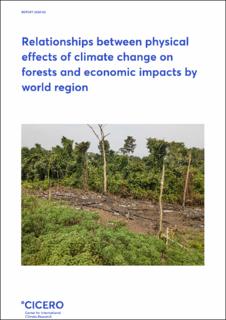Relationships between physical effects of climate change on forests and economic impacts by world region
Report
Published version
Permanent lenke
https://hdl.handle.net/11250/2655714Utgivelsesdato
2020-05Metadata
Vis full innførselSamlinger
- CICERO Reports [210]
Sammendrag
This study projects the macroeconomic consequences of impacts of climate change on forests by world regions under the three Representative Concentration Pathways, RCP2.6, RCP4.5, and RCP8.5 until 2100. It is based on assessments of the impacts of the mortality of trees in forest plantations in 27 countries. The forestry sectors in these country covers about 75 percent of the value of timber production in the world. To address the macroeconomic consequences, the estimated effects of climate change on forest mortality were generalized to 11 world regions, and implemented in the computable general equilibrium model GRACE, to address adaptation in the management of forests, resulting market effects and impacts on macroeconomic indicators. With few exceptions, climate change will lead to slower growth of forests in most regions, but there are large variations, which must be explained by other factors than the increase in temperature, such as an apparent dependency on changes in precipitation. The economic impacts are moderated substantially by an increase in the value of felled trees. While the felling is reduced on the world scale, the total value of the felling increases. Combined with the adaptation within the forestry sector, this leads to an even higher increase in the contributions to the gross domestic product from the forestry sectors on the world scale

